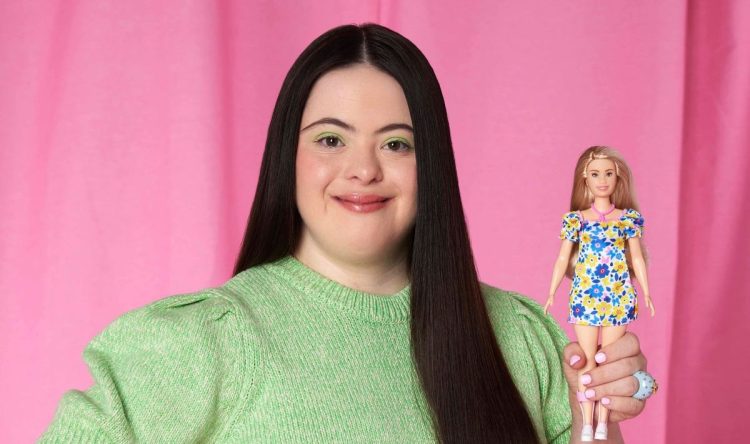Mattel, the manufacturer of Barbie dolls, has introduced its latest release on Tuesday, a Barbie doll with Down syndrome, in a step to diversify the production of Barbie dolls.
The new doll is part of Mattel Barbie Fashionistas line, which aims to offer kids more diverse representations of beauty and fight the stigma around physical disabilities.
Previous Barbie fashionistas have included a doll with a prosthetic leg, one with hearing aids, another that comes with a wheelchair and a doll with the skin condition vitiligo.
Mattel has worked closely with the National Down Syndrome Society on the Barbie with Down syndrome added to the Barbie Fashionistas line’s shape, features, clothing, accessory and packaging to ensure that it accurately represents a person with Down syndrome.
“This means so much for our community, who for the first time, can play with a Barbie doll that looks like them,” Kandi Pickard, NDSS president and CEO said in a statement.
Pickard added “this Barbie serves as a reminder that we should never underestimate the power of representation. It is a huge step forward for inclusion and a moment that we are celebrating.”
British model and advocate for inclusion, visibility and understanding of people with Down syndrome, Ellie Goldstein, that she felt overwhelmed when she saw the doll, stressing the importance of diversity, as people need to see more people like her out in the world and not hidden away.
For the new Fashionista doll, Mattel said it was reviewed by a medical professional, in order to introduce a new face and body sculpt illustrative of women with Down syndrome, including a shorter frame and a longer torso.
Additionally, the face features a rounder shape, smaller ears, a flat nasal bridge, while the eyes are slightly slanted in an almond shape, its palms include a single line, a characteristic often associated with those with Down syndrome, according to Mattel.
The new Barbie wears a pink ankle foot orthotics to match her dress and her sneakers feature a zipper to represent children with Down syndrome, some of whom use orthotics to support their feet and ankles.
The new Barbie’s puff sleeved dress pattern features butterflies and yellow and blue colors, which are symbols and colors associated with Down syndrome awareness, Mattel mentioned.
The doll’s pink pendant necklace with three upward chevrons, a symbol that unites the Down syndrome community, represents the three copies of the 21st chromosome which is the genetic material that causes the characteristics associated with Down syndrome, Mattel added.
“Our goal is to enable all children to see themselves in Barbie, while also encouraging children to play with dolls who do not look like themselves, Mattel’s goal with the doll is to counter social stigma through play,” Lisa McKnight, Mattel’s executive vice president and global head of Barbie & dolls, said in a statement.
McKnight continued “doll play outside of a child’s own lived experience can teach understanding and build a greater sense of empathy”
Mattel has been taking a more inclusive direction with its newly produced Barbie dolls, after facing criticism since its debut in 1959, for creating unrealistic beauty standards to young girls with the image of their dolls.
For decades, Barbie dolls have been described to have unrealistic female body proportions, and typically portrayed as white-skinned, thin, blonde and with a narrow waist.
After the long run criticism, Mattel introduced Barbie dolls in four different body types, seven skin tones, 22 colors and 24 hairstyles in 2016, three years prior to its launch of the Barbie Fashionistas line.
